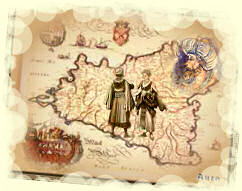The Belìce valley

The Belìce Valley belongs to western Sicily, at the intersection between the provinces of Palermo, Trapani and Agrigento.
In these lands the Belìce river flows for 77 km. Where the two branches, right Belìce and left Belìce join, the Belìce valley is born.
The Belìce river flows along the valley through a variegated and heterogeneous territory, encountering crops of wheat, olive trees and vines in contrast to sandy soils, palm trees and thermal waters.
In these lands the Belìce river flows for 77 km. Where the two branches, right Belìce and left Belìce join, the Belìce valley is born.
The Belìce river flows along the valley through a variegated and heterogeneous territory, encountering crops of wheat, olive trees and vines in contrast to sandy soils, palm trees and thermal waters.
The lands of the Valle del Belìce evoke an ancient history that saw the flourishing of the Sican and Phoenician civilization first, then the Hellenic and Roman civilization.
These territories are a source of natural wealths. Here the Vastedda della Valle del Belìce PDO is produced, from autochtonous sheep breedings and agro-food production, in the land of the Gattopardo, where a unique cheese of its kind is born.
As stated in the production specifications, all the raw materials are obtained within this area, the intent of its prescriptions is clearly to make tradition and the bond with the territory prevail over all.
These territories are a source of natural wealths. Here the Vastedda della Valle del Belìce PDO is produced, from autochtonous sheep breedings and agro-food production, in the land of the Gattopardo, where a unique cheese of its kind is born.
As stated in the production specifications, all the raw materials are obtained within this area, the intent of its prescriptions is clearly to make tradition and the bond with the territory prevail over all.






